“Whoa… let’s just stop a moment right there and rewind! Say what?!… Hydrolysed?! Hydrophobic!? Scab what!?… What the h…”
This is exactly how I felt when I started my transitioning journey and was hit by a trainload of natural hair jargon that left me perplexed. At the time, it almost felt like I was taking a post-graduate course judging by the amount of research I had to do to understand the lingo.
Wouldn’t it be great if on our initiation to natural hair we were gifted with a dictionary of natural hair jargon to help us decipher the new dialect? A pocket version would be handy, you never know when a quick consultation is needed while reading a blog post, watching a video or having a conversation, right?! (nobody likes to feel dumb).
If you’re somewhere in the same place I was a few years ago, all I can say is that just like we all learned the foreign language of maths, it will all sink in. Honestly, it will. You did learn your 1 + 1 =2 right?! Then you got this. Really. In fact, this way easier than maths, by a long mile. So you got this one going on for you. Yay!!
Anyway, I realised the other day I probably should have written a post listing all the natural hair jargon here a long time ago. How can I aim to help wannabe and newbie transitioners and have them frown their eyebrows at every other sentence they read. (Really Monica, you should know better. Shame on me!)
Luckily, popular wisdom says it is never too late to correct a mistake. So without further ado, I’d like to offer you, my amazing readers, your natural hair dictionary right here on the blog. No need to stray away from the cosiness of our lounge here to look for an interpreter.
And, the best part is that you can download your very own dictionary and keep it close to you whenever you need. All that frowning is gonna give you wrinkles, and we should keep those wisdom marks on pause for a few more years, right? Just click the image bellow get your Curly Hair Jargon Translator.

And now let’s get down to business, shall we?
NATURAL HAIR DICTIONARY
ACIDIC – name that is given to a liquid solution that has a pH level lower than 7. (see pH)
ACV – is an abbreviation of apple cider vinegar. It is a raw and unfiltered vinegar that has many beneficial uses in hair care.
Read More: The Benefits Of Apple Cider Vinegar
AFRO– a hairstyle achieved by picking the hair into a round shape with a comb.
Read More: Get Your Own Curly Afro With Type 3 Hair
ALKALINE – name that is given to a liquid solution that has a pH level higher than 7. (see pH)
ALOPECIA– is a disease where the immune system of a person attacks their hair follicles and causes hair loss. The hair loss can be complete or partial, and the condition can revert or not. Medication can help, however, there is no cure.
ALS – an abbreviation of Ammonium Lauryl or Laureth Sulphate. See Sulphate.
APL– an abbreviation that refers to hair that has armpit length.
BAGGING– is done by applying a moisturiser or even a conditioner on the hair and covering it with a plastic cap, bag or cling film. The purpose is to infuse moisture into the hair, which is often done just to the ends of the hair to preserve and keep them healthy as they are the oldest part and more easily damaged. Can be done for a couple of minutes or overnight.
BANDING– a technique used to counteract shrinkage and increase hair length by stretching it. This is achieved by holding a section of hair and placing several elastic bands along its length to stretch it.
BANTU-KNOT – hairstyle that takes several sections of hair (small to medium-large) and twisting them until they wrap onto each other in a knot.
BC – an abbreviation that refers to Big Chop, the act of cutting relaxed, coloured or otherwise processed hair in order to remain with naturally curly hair.
Read More: 4 Tips On When To Big Chop Transitioning Natural Hair
BRAID– a weaving hairstyle, also known as plait(s), achieved by in interlacing three or more sections of hair.
BRAID AND CURL – a hairstyle that is achieved by making braids (see braid) and curling the ends with a perm rod or flexi rod. It’s particularly helpful for those with transitioning hair to help curl the ends of straight relaxed hair.
Read More: 6 Ways To Blend Transitioning Hair
BRAID-OUT – a hairstyle that is achieved by making braids (see braids) and then unravelling them to achieve a hair texture similar to a wave.
BSL – an abbreviation that refers to hair that has bra strap length.
CARRIER OIL – also know as a base oil or vegetable oil that is used to dilute essential oils as these are very concentrated and should not be used undiluted.
CG (METHOD)– an abbreviation that means Curly Girl or Curly Girl Method. It is a term used when referring to someone or a hair care regimen that doesn’t use shampoo to wash curls. Instead, a conditioner or cleansing conditioner is used to give curls extra moisture. The use of insoluble silicones and drying alcohols is also restricted.
Read More: The Curly Girl Method Explained
CLARIFYING– the act of removing product buildup from the hair to improve its moisture uptake. It can be achieved with a clarifying/purifying shampoo or clay rhassoul as an example.
Read More: Why Should You Clarify Natural Hair?; 5 Tips It’s Time To Use A Clarifying Shampoo
CLUMPING– refers to gliding one’s hands, in praying position, through a hair section to help or encourage the penetration/absorption of hair products into the hair.
CONES– see silicone.
CORNROW– a hairstyle where the hair is braided or twisted close to the scalp in a continuous row.
CO-WASH (Conditioner Wash) – refers to washing hair with a conditioner or cleansing conditioner. These products have ingredients in them that act as surfactants (see surfactants) and help cleanse the hair.
CREAMY CRACK – an expression that tries to establish a correlation between the use of relaxers and being addicted to the look of straight hair.
DEEP CONDITIONING – an intense hair treatment that is normally performed after shampooing and conditioning the hair. It strengthens, improves and increases the resilience of the hair.
Read More: Know Your Deep Conditioners and Jump-Start Your Results; Know The Basics To Make Your Natural Hair Homemade Deep Conditioner; 5 Ways To Add Heat To Your Deep Conditioning Treatment;
DEW POINT – is the point at which the temperature reaches a pressure and humidity level that water droplets start to form (a.k.a. water vapour, fog). In the natural hair community, people normally refer to it as humidity where a humid day (high humidity) translates into a frizzy hair day (see frizz).
DUSTING– a hair trim done at home with hair shear that is so light than when done the hair on the floor looks like dust. Here’s a video from Melissa Denise to help you out.
EMOLLIENT– a substance (natural or synthetic) that has the has the ability to moisture the hair making curly hair less dry.
EMULSIFIER (Emulsifying Agent) – a substance (natural or synthetic) that is needed to stabilise an emulsion because its ingredients don’t mix (ex. oil and water).
Essential Oil – a natural, concentrated oil obtained through distillation with the strong scent of the plant it was extracted from.
EVOO – an abbreviation also known as extra virgin olive oil. An oil that is not refined or mixed with other ingredients and is obtained through mechanical processes only.
FLAT-BRAIDS– a hairstyle where twists (see braids) are made close to the scalp in a continuous row.
FLAT-TWISTS – a hairstyle where twists (see twists) are made close to the scalp in a continuous row.
FRIZZ– a natural occurrence in curly hair whereby the hair swells due to too much moisture intake from the humidity in the air which raises the hair cuticles. Curls stop being smooth and shiny and stop clumping together to start forming a halo of hair that can be localised to one or several areas, or all over the head. Hair will look like a big puffy mane.
Read More: 9 Tips To Avoid Frizzy Hair
GREENHOUSE EFFECT – is a hair method to taking care of natural hair which promises to increase hair sebum production and hair moisture. This is achieved by making the hair damp, applying a natural oil and covering the head with a cap, which creates a greenhouse effect that keeps hair moisturised.
Read More: What Is The Green House Effect Hair Regimen?; Troubleshooting the Green House Effect Regimen – Common Issues
HAIR BREAKAGE – occurs when hair breaks along its length as a result of damage to its structure.
Read More: Know The Difference Between Shedding And Breakage
HAIR DENSITY – refers to the number of individual hair strands one has in their scalp. Hair density can range from low, medium and high.
Read More: Unboxing Natural Hair: What Is Hair Density?
HAIR ELASTICITY– refers to the hair’s ability to stretch and return to its natural shape. It can range from low, medium and high.
Read More: Unboxing Natural Hair: Hair Elasticity
HAIR POROSITY – refers to the hair’s ability to absorb and retain moisture. This is greatly determined by the ability of the cuticle layers of the hair to open and close. It varies from low, medium and high porosity.
Read More: Unboxing Natural Hair: What Is Hair Porosity?; How To Improve Hair Porosity;
HAIR REGIMEN – a system for taking care of natural hair made up of four important building blocks: Cleansing, Conditioning, Deep Conditioning and Moisturising. For each block practices, techniques, products and frequency of procedures are defined. Other blocks can be added such as Pre-poo or Maintenace. Read the post below and download the free worksheet to start planning your hair regimen.
Read More: Finally! A Hair Regimen That Works; 3 Ways To Overcome Laziness In Your Natural Hair Regimen

HAIR SHEDDING -a normal occurrence that happens when hair gets to the end of its life cycle. The hair bulb is still intact on the hair.
HAIR TEXTURE – refers to the width or thickness of hair which can be fine, medium and coarse.
Read More: Unboxing Natural Hair: Hair Texture
HAIR TYPE – a system to map out different shapes of curly hair that can range from type 2 (wavy) to 4 (nappy/kinky) and each one has three subcategories (a, b and c) reflecting differences in curl tightness.
Read More: Unboxing Natural Hair: What Is Your Hair Type?
HENNA (Lawsonia inermis) – a natural plant dye that has a dye molecule (lawsone) with an orange-red colour that binds with the keratin in hair. The final colour depends on natural hair colour and can range from orange-red to burgundy or chestnut. Other hair colours can be achieved by mixing henna with other plant dyes such as cassia and indigo. For more info on how to achieve different hair colour with henna download the free guide.
Read More: Henna For Hair Care; Achieve Different Colours With Henna As A Natural Hair Dye: 7 Mistakes Common Mistakes When Using Henna For Curly Hair

HIGH POROSITY – Hair that has little or no ability to retain moisture. Although water can quickly and easily penetrate the hair it will also exit without any resistance (see hair porosity). (add post)
Read More: 5 Tips That Let You Know You Have High Porosity Hair
HUMECTANT– a natural or synthetic ingredient that has the ability to attract and retain moisture, which is especially beneficial to dry curly hair. Natural ingredients such as honey, aloe vera, propylene glycol or panthenol have this characteristic.
HYDROLYSED (Hydrolysis) – refers to an ingredient (chemical compound) that is broken down into its components parts through the addition of a water molecule. For instance, a large protein molecule can be broken down into small amino acids which can then easily penetrate the hair structure to repair, strengthen or help moisturise it.
Read More: The Role Of Proteins In Hair Care;
HYDROPHILIC – a substance that is attracted to water and will normally mix with or dissolve in water.
HYDROPHOBIC– a substance that repels or doesn’t mix with water, such as oil.
HYGRAL FATIGUE – Happens when hair loses elasticity due to the constant and excessive water absorption as it forces the hair to expand (water intake) and contract (water exit). The cuticle layers of the hair are left weaken and worn out and this is when weakened can happen easily.
Read More: What Is Hygral Fatigue?; 5 Tips To prevent Hygral Fatigue; Stop! Overnight Deep Conditioning Is Damaging Your Hair.
KINKY– a term normally used to refer to hair of African origin which has little to no curl pattern and can bend to 180 degrees, forming a “z” shape that has kinks and twists.
LINE OF DEMARCATION – is the point where naturally curly and transitioning hair meet. It’s a weak area where hair can break easily.
Read More: 6 Tips To Avoid Breakage At The Line Of Demarcation In Transitioning Hair
LOW POROSITY – Hair that resists to water/moisture penetration and as such can be difficult to moisturise. However, if and when moisture is able to penetrate low porosity hair will retain moisture for a long period. (see hair porosity).
LOW-POO – is an approach to cleansing the hair that uses products with less drying sulphates to curly hair while still providing a good cleansing experience.
Read More: 6 Sulphate Free Shampoos For Softer Curly Hair
MOISTURISER– a substance that has the ability to reduce or eliminate the symptoms of dry hair or skin. Read the posts below and get a free hair moisturising guide.
Read More: The 4 Elements Of Knowing How To Moisturise Transitioning Hair; 3 Moisturisers For Transitioning Hair; 5 Moisturisers For Your Natural Hair Regimen During Winter; 5 Ways To Quickly Add Moisture To Your Transitioning Hair
NATURAL HAIR JOURNAL – a hair care diary that can be more or less detailed about hair practices, methods, recipes, products, tools, hairstyles and more. The objective is to be able to track goals, identify products, methods or practices that work or not, identify hair damaging behaviours, etc. Can be done by using a journal or a simple notebook. For help in tracking your hair goals read the post below and download your Goal Setting Plan.
Read More: How To Set Hair Goal And Be Successful

NATURAL HAIR JOURNEY – describes the personal path taken by those who decide to embrace their natural hair and free themselves of chemical hair straighteners (relaxer). It can be done through a BC or by transitioning ( See Big chop and Transitioning Hair Journey).
Read More: What Not To Expect When Transitioning To Natural Hair; 4 Important Lessons I Learned While Transitioning To Natural Hair; 8 Rookie Mistakes To Avoid When Transitioning To Natural Hair
NO-POO – is an approach to cleansing curly hair that uses no sulphates (hair cleaning ingredient) as they deplete the hair of its natural sebum, which is meant to protect the hair from environmental aggressions and prevent/delay moisture release. These products make very little if any lather but still provide a cleansing experience.
Read More: 6 No-Poo Shampoo Alternatives; Soap Nut For A Natural Hair No-Poo Shampoo
pH – a term used to express if a solution is alkaline or acidic according to a scale where a 7 pH is neutral. Anything above this is alkaline and below is acidic (ex. human hair is acidic).
Read More: Why Should You Care About Natural Hair And pH?
PINEAPPLE (Pineappling) – Holding one’s hair at the top front of their head to preserve curls. It’s normally done at night before going to bed using an elastic band or even a scarf.
PLOP (Plopping) – a technique used to remove excess water from the hair using a t-shirt as it doesn’t snag or breaks hair like a normal cotton towel. Here’s a quick video from ShelbyVille.
PRE-POO – the act of applying a vegetable oil, conditioner or a mixture of both on the hair prior to washing it with the intent to prevent moisture depletion that often happens with the use of shampoos.
Read More: Should You Pre-Poo Your Hair?; Tips To Make Your Oil Pre-Poo More Effective; 3 Pre-Poo Recipes For Your Transitioning Hair
PRE-WASH – a hair procedure that is made before washing the hair with a shampoo or other cleansing product, such as a pre-poo.
PROTECTIVE HAIRSTYLE – a hairstyle that is meant to protect the hair from moisture depletion and environmental and mechanical damage. It requires little to no manipulation and protects the hair ends by keeping them tucked in.
Read More: Protective Hairstyles For Transitioning Hair
RELAXER– a chemical substance that uses lye to permanently straighten curly hair.
SCAB HAIR – name that is given to describe newly grown hair that looks wiry, feels dry and can have a wavy shape rather than a curly one.It is hypothesised that the continued use of chemical relaxers in the past damaged the scalp and ingrown hair which makes the hair grow out of the hair follicles still “damaged”.
SCRUNCH – It consists of holding a section of hair on an upward movement and gently pressing it. It can be done to remove the cast from hair products such as a gel or to encourage the formation of curls.
SEALING (Seal) – refers to the use of a vegetable oil to seal one’s hair to retain, prevent and delay moisture release. Sealing can also be achieved with the use of film-forming ingredients such as silicone, oat milk, flaxseed gel, slippery elm or marshmallow root. If using oils always ends up in you having greasy hair download the flowchart bellow to avoid that problem.
Read More: Hair Care – Penetrating Or Sealing Oils?; 3 Oils To Avoid Greasy Natural Curls

SEARCH & DESTROY– a technique used to get the hair rid of split ends, knots, dents and other visible damage to the hair structure without having to make a regular trim or hair cut. Each individual strand is analysed and any damage is cut using shears. It helps to preserve hair length and maintain its health. For a video tutorial check Dusting.
Read More: Know When To Trim Transitioning Hair
SECOND DAY HAIR– a term used to describe a hairstyle that maintains most of its shape on the second day with little or no additional product or hair manipulation. The term suffers a small change to refer to a hairstyle that lasts longer than two days: 3rd-day hair, 4th-day hair,5th-day hair, etc.
Read More: 6 Tips You Can Use For Achieving A Good Second Day Hair
SHINGLING – a technique used to improve or increase curl definition when a moisturiser or styling product is applied on the hair. It consists of taking a hair section and gliding your fingers, a comb or a brush (ex. styling Denman brush) through it. Here’s a video from YourNaturally11 for some visual help.
SILICONE– a synthetic ingredient that is present in many hair products. It smoothes, gives shine and makes the hair silky and shiny by creating a film around it that can temporarily fix split ends, cracks and holes in the cuticle layer. Get to know silicones better read the post below and download your list of soluble and insoluble silicones.
Read More: Why Silicones in Natural Hair Just Rock!; Broccoli Seed Oil The New Wonder Oil For Curly Hair
![]()
SLIP– characteristic that some products have when they are able to cover the hair and detangle it with ease. Hair strands glide or slide past each other making de detangling or styling process quick and easy.
SLS – see Sulphate.
SULPHATE – synthetic ingredients that are able to remove dirt and grease and are normally found in dish soaps, laundry cleaners or shampoos. Some are very drying to curly hair as is the case of Ammonium or Sodium Lauryl Sulphate (ALS or SLS) while others are very mild such as Cocamidopropyl Betaine.
Read More: Co-Washing, Does It Really Clean Your Hair
SURFACTANT – an ingredient that is meant to reduce the surface tension between two liquids or a liquid and a solid. It can act as a sul[hate (detergents), foaming agents or emulsifiers. Examples are Behentrimonium Chloride or Cetrimonium Chloride.
Read More: 4 Ingredients That Take Moisture From Your Hair
TEENY WEENY AFRO (TWA) – an expression used to describe a very short Afro.
TRACTION ALOPECIA – hair loss that occurs as a result of hairstyling options, where hair follicles are under constant pressure and as a result the hair starts by thinning down followed by hair loss, which is when a receding hairline is observed. The condition can be reversed by avoiding tight hairstyles like ponytails, buns, cornrows or extensions.
Read More: 7 Causes Of Thinning Hair Edges
TRANSITIONING HAIR JOURNEY – describes the path taken by those who decide to embrace their natural hair texture without doing the BC (see Big Chop). Instead, they let their curly hair grow and gradually cut their relaxed hair until their hair is completely natural. Although the term is mainly used by those who transition from relaxed to natural hair, it can also be used by those who transition from dyed or damaged hair.
TWIST– a hairstyle that is achieved by taking a section of hair, parting it into two and intertwining them over each other.
TWIST AND CURL – a hairstyle that is achieved by making twists (see twist) and curling the ends with a perm rod or flexi rod. It’s particularly helpful for those with transitioning hair to help curl the ends of straight relaxed hair.
TWIST-OUT – a hairstyle that is achieved by making twists (see twist) and then untwisting them to achieve a hair texture similar to a wave.
WASH & GO– A hairstyle whereby the hair is washed, styled and left to dry free in its curly natural state.
WL – an abbreviation that refers to hair that has waist length.
Wow, this is a long list of natural hair jargon and I have included in here all the words, terms and expressions I can think of. Some of them will probably be known to you and some will be new, but if there happens to be a missing one add a comment below and share it will all of us.
Don’t forget to download your Natural Hair Jargon Translator. Keep it handy and keep it close.

And please, don’t forget to share this post with your friends so they can also have their own natural hair jargon translator.


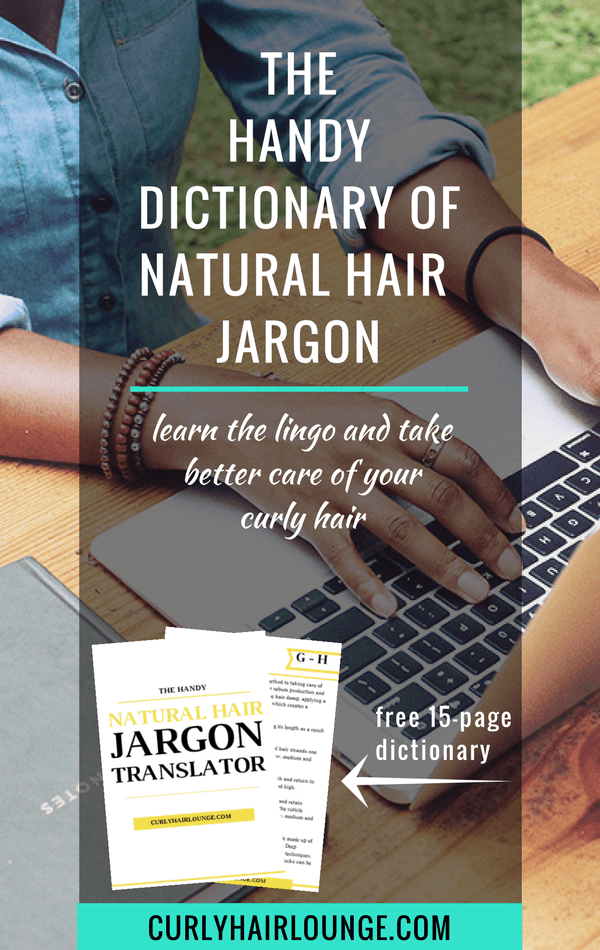
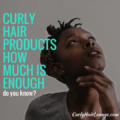
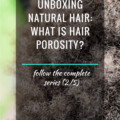
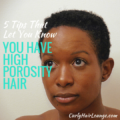
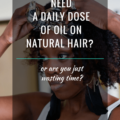
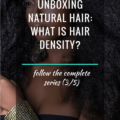
2 thoughts on “The Handy Dictionary Of Natural Hair Jargon”
Awesome blog! Do you have any recommendations for aspiring writers?
I’m planning to start my own site soon but I’m a little lost on everything.
Would you suggest starting with a free platform like WordPress or go for
a paid option? There are so many choices out there that I’m totally overwhelmed ..
Any tips? Thanks!
It depends on your patience, time and what you can afford. I started with WordPress which is free and I would recommend it, however, there is a learning curve and if you have the patience, go for it. On the other hand, platforms like Wix or Squarespace are super user-friendly you can set up your website in a few hours but there is a monthly cost.
Hope this helps. 🙂